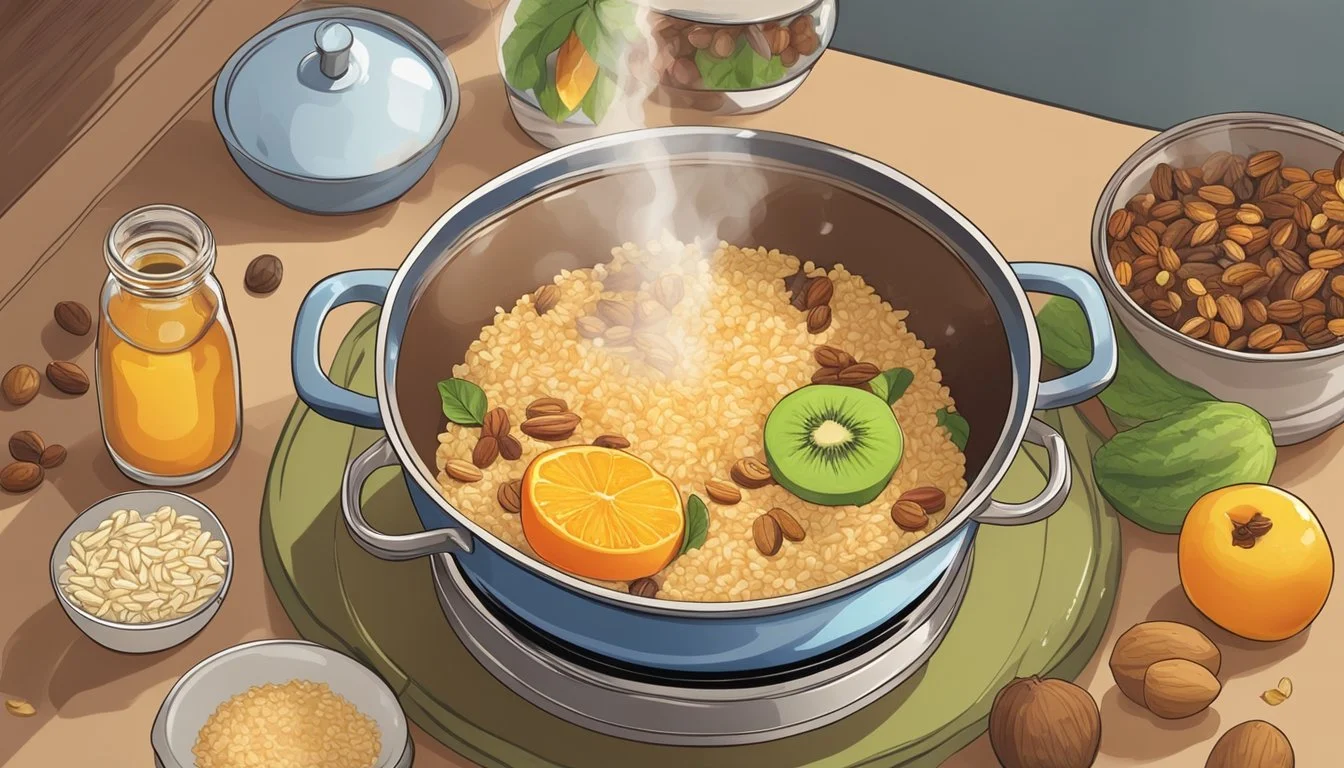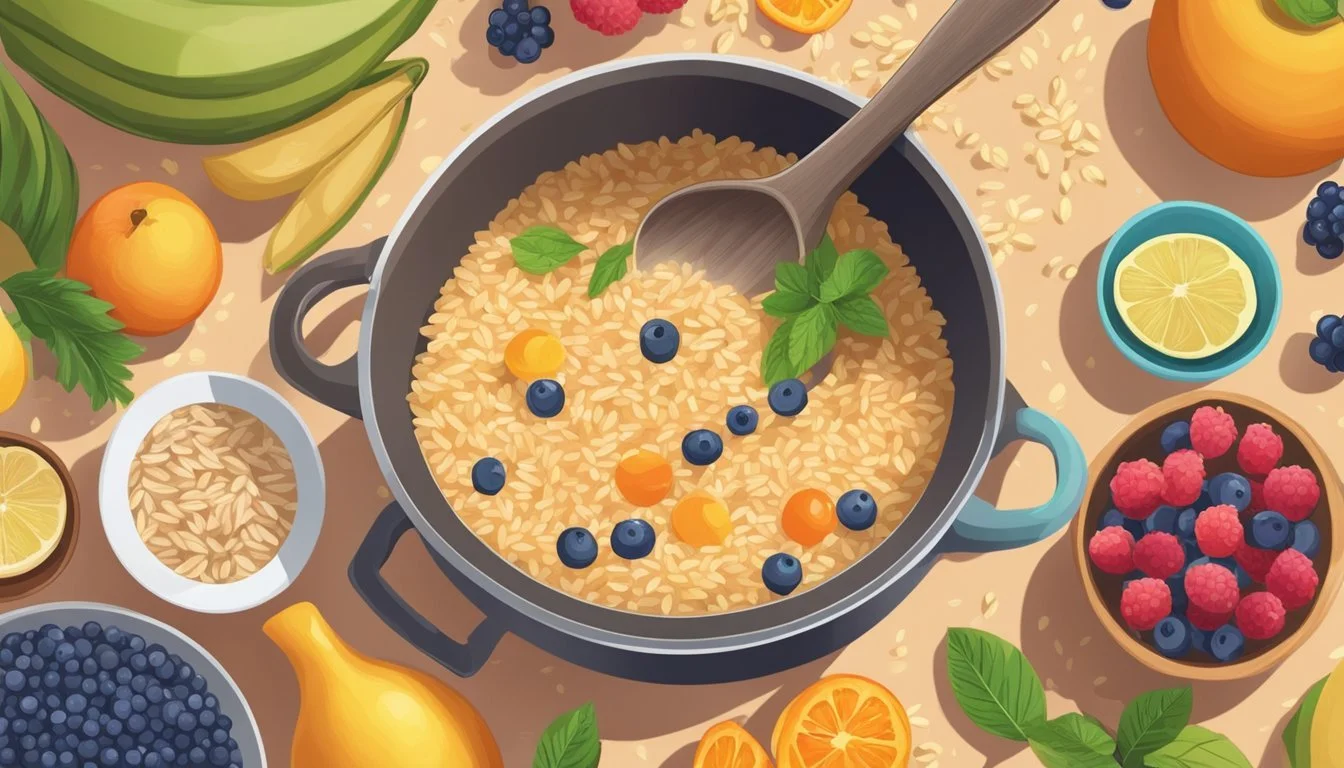How to Cook with Brown Rice Syrup for Natural Sweetness
A Simple Guide to Healthier Desserts
Brown rice syrup is a natural sweetener derived from cooked brown rice (What wine goes well with rice?), offering a subtler sweetness compared to refined sugars. It is made by treating brown rice with enzymes that break down its starches into simpler sugars. When the resulting liquid is strained and reduced, it forms a syrup with a consistency similar to that of honey. This versatile ingredient can impart a gentle, buttery sweetness to various dishes, making it a staple in health-conscious kitchens.
In cooking, brown rice syrup serves as a valuable tool for those seeking healthier alternatives without sacrificing flavor. Its lower fructose content can make it a preferable option for nutritional balance, while the presence of trace amounts of nutrients contributes to its appeal. Furthermore, brown rice syrup's unique properties allow it to enhance recipes from baked goods to savory sauces, providing a depth of flavor that harmonizes with both sweet and salty components.
Employing brown rice syrup in culinary applications requires consideration of its composition and flavor profile. It boasts a mild, nutty taste that complements a wide array of ingredients. Given its higher glycemic index, moderation is key, and it may be best suited for those not sensitive to glucose. Whether incorporated into a morning bowl of oatmeal or glazed over roasted vegetables, brown rice syrup's natural sweetness has the potential to elevate a meal while aligning with a preference for whole, less processed foods.
Understanding Brown Rice Syrup
In the quest for natural sweeteners, brown rice syrup emerges as a plant-based alternative that provides a distinct flavor profile and a varying degree of sweetness. This section delves into its origins, nutritional aspects, and how it stacks up against other sweeteners.
Origins and Production
Brown rice syrup is created from brown rice that has been cooked and then treated with natural enzymes. These enzymes break the starches in the rice down into sugars, mainly maltose and a small amount of glucose. Following the breakdown, the liquid is strained and reduced through evaporative heating until it attains a syrup-like consistency. This process is void of any artificial additives, relying on the rice's natural components to achieve sweetness.
Nutritional Profile
The nutritional makeup of brown rice syrup includes a modest amount of B vitamins and minerals such as magnesium, zinc, and iron. It is essentially composed of sugars, primarily maltose and glucose. Unlike refined sugars, it's a source of some nutrients but is still calorie-dense with a high glycemic index of 98, causing a rapid increase in blood sugar levels. The syrup lacks significant amounts of fiber, antioxidants, and has minimal dietary fiber content.
Nutrient Presence in Brown Rice Syrup Calories High Glycemic Index 98 Fiber Low to Minimal Antioxidants Minimal B Vitamins Present Magnesium Present Zinc Present Iron Present
Comparing Sweeteners
When contrasted with other sweeteners like honey, maple syrup, molasses, corn syrup, and refined sugar, brown rice syrup offers a different nutritional angle. It is higher in glucose rather than fructose, which distinguishes it from sweeteners like agave. This glucose-centric profile can impact blood sugar levels swiftly. Unlike artificial sweeteners and more processed options, it does not contain fructose or high levels of refined sugars. As a plant-based product, it stands as a vegan and gluten-free alternative to regular white sugar.
Cooking with Brown Rice Syrup
When using brown rice syrup in the kitchen, one must consider its high glucose content and how this affects the sweetness and moisture of dishes. It's a versatile ingredient that can contribute to the successful preparation of a variety of recipes.
Baking Essentials
In baking, brown rice syrup serves as a natural sweetener. Its viscosity offers a unique moisture to cakes, cookies, and muffins that is different from other sugars. Here's how to use it:
Substituting Sugar: Replace 1 cup of conventional sweeteners with 3/4 to 1 cup brown rice syrup; for every cup used, reduce other liquids in the recipe by about 1/4 to maintain the correct moisture balance.
Flavor Profiling: Expect a subtle, buttery sweetness which works exceptionally with nut-based desserts.
Texture in baked goods such as pancakes and desserts can be slightly denser due to the syrup's consistency.
Savory Dishes and Dressings
Brown rice syrup can enrich savory dishes and create well-rounded salad dressings:
Glazes and Sauces: Ideal for glazing vegetables or creating a base for sauces; blends well with soy or teriyaki for an Asian-inspired taste.
Salad Dressings: Its natural stickiness helps emulsify ingredients, providing a gentle sweetness to counteract acidity in vinaigrettes.
A tablespoon added to roasted dishes (What wine goes well with roasted dishes?) can enhance caramelization, perfect for that golden crust.
Beverage Flavor Enhancements
The gentle sweetness of brown rice syrup can subtly enhance tea, coffee, and smoothies:
Tea or Coffee: Stir a teaspoon into hot beverages for a mild sweet note without overpowering the drink's natural flavors.
Smoothies: Add complexity to smoothies by including a small amount; it harmonizes the flavors while contributing to a smooth texture.
Use sparingly to achieve balance in beverages without drastically altering the dietary profile.
Health and Dietary Considerations
When cooking with brown rice syrup, it's important to consider its impact on health, specifically regarding blood sugar management, dietary restrictions, and weight management. Brown rice syrup can serve as an all-natural sweetener, but understanding its dietary implications is crucial.
Blood Sugar Management
Brown rice syrup has a high glycemic index (GI) value, typically much higher than table sugar. For individuals with diabetes or those attempting to maintain stable blood sugar levels, this means that brown rice syrup can cause rapid spikes in blood sugar. A healthcare professional should be consulted to best manage dietary choices related to blood sugar balance.
Gluten-Free and Vegan Options
This syrup is an appealing alternative for those following a gluten-free or vegan diet. Its plant-based origins mean it is innately vegan, and because it is derived from brown rice, it is also inherently gluten-free. However, to ensure purity, individuals should verify that the syrup hasn't been processed in a facility that handles gluten-containing products.
Weight and Diet Management
Despite being a plant-based and natural sweetener, brown rice syrup is calorie-dense and sugar-rich, which can affect weight management. Individuals should consume it in moderation as part of a balanced diet. It offers minimal protein and fiber, unlike whole brown rice, and thus doesn't significantly contribute to satiety. It may not be the healthier alternative for every diet, particularly for those tracking calorie intake.
Recipe Inspiration
Brown rice syrup can become a versatile ingredient in the kitchen, enhancing both flavor and texture. Its ability to impart subtle sweetness makes it particularly useful in a variety of recipes from sweet treats to hearty snacks without overwhelming the dish's natural flavors.
Sweet Treats
For those who indulge in baking, brown rice syrup is an excellent choice for creating moist cakes and chewy cookies. One can use it to replace regular sugar in recipes to add a depth of flavor. It works particularly well in dense confections where its richness can shine. For example, in a classic carrot cake, substituting brown rice syrup can add not just sweetness but also a hint of nuttiness to the profile.
Breakfast Favorites
Starting the day with brown rice syrup can bring natural sweetness to breakfast staples. When making pancakes or waffles, substituting some of the sugar with brown rice syrup can yield a golden-brown finish with a slight hint of caramel. The syrup can also be drizzled directly onto the hot breakfast for those who prefer a less sugary start. In granola and granola bars, brown rice syrup can act as a binder that offers crispness without being overly sweet, making for a satisfying morning crunch.
Hearty Snacks
For snack enthusiasts looking for a healthier option, brown rice syrup can be the key ingredient. It's particularly effective in baked goods and snacks that require a sticky component to hold them together. In granola bars, for instance, it provides a chewy texture and clumps the oats and nuts effectively. Its use in crispy rice treats can yield a less sweet version of the classic snack, which can pair wonderfully with the addition of seeds and nuts for a more substantial nibble.




